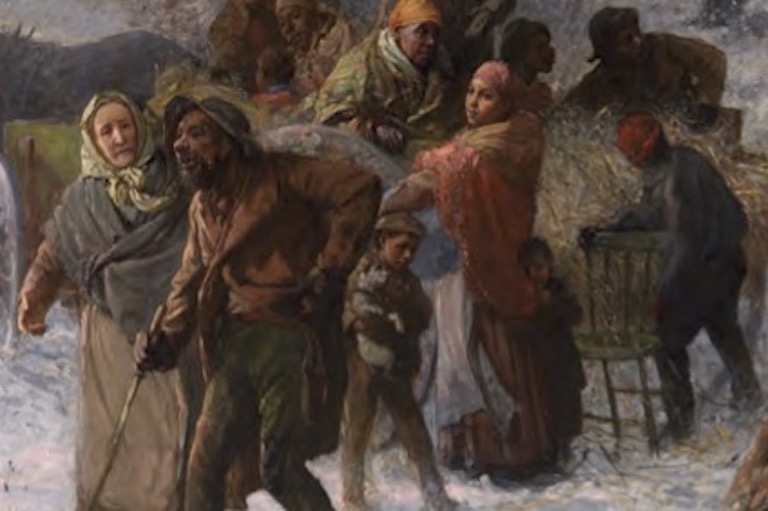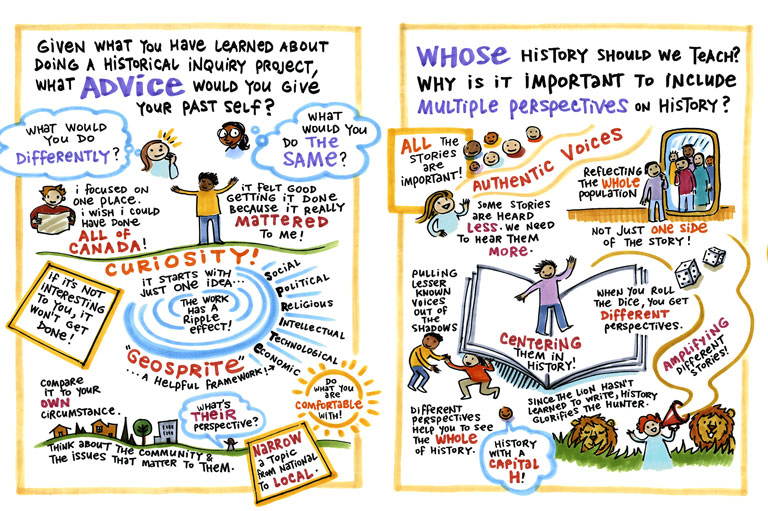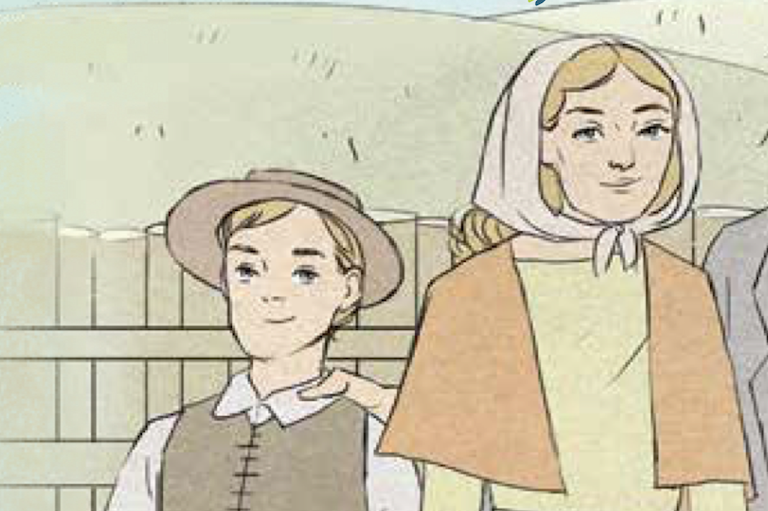A Child Evacuee – From England to Canada
Grade Levels: 3/4, 5/6, 7/8
Subject Area: Social Studies, History, Settlement & Immigration
This lesson addresses the perspective of children and immigration during the Second World War.
Lesson Overview
This lesson examines the perspective of an evacuee child during the Second World War. Students will be asked to understand war from a child’s point of view and the impact of war on the lives of children. Students will read and analyze the primary source document written by Jean Hadfield Feliksiak, as well as photos and newspaper articles about her journey to Canada in 1940. After the war, Jean returned to England. She eventually became a nurse and then emigrated to Selkirk, Manitoba in 1957. She currently lives in Winnipeg, Manitoba and turned 88 years old in December 2020.
Time Required
2-3 lessons
Historical Thinking Concept(s)
- Establish historical significance
- Use primary source evidence
- Analyze cause and consequence
- Identify continuity and change
- Take historical perspectives
Learning Outcomes
Students will:
- Read the stories of Jean Hadfield Feliksiak.
- Understand some of the impacts of the Second World War on children.
- Learn about life on the Prairies in the 1940s.
Background Information
At the beginning of the Second World War, Britain was concerned about possible invasion from German as well as bombing. As early as 1939, children in urban centres were evacuated to the countryside for their safety. “Operation Pied Piper” moved approximately three million children across Britain and around the world to Commonwealth countries or allied countries. The overseas destinations children were shipped to included Canada, Australia, New Zealand, South Africa, and the United States.
Journeying to these foreign countries by ship was dangerous, as German submarines roamed the coast of Ireland, England, France, and the Atlantic Ocean. One tragic sailing involved the SS City of Benares. This passenger ship was torpedoed by a German submarine in the late evening on September 17th, 1940. Early the next morning, the ship sank and 77 children perished. This tragedy led to the cancelling of the relocation plan by the Children’s Overseas Reception Board, or CORB.
Approximately 6,000 British children came to Canada through government and non-governmental programs.
“Finding homes was often traumatic for the children. As a rule, billeting officials would line the newly arrived children up against a wall or on a stage in the village hall, and invite potential hosts to take their pick. The phrase, ‘I’ll take that one’ became a statement indelibly etched in countless children’s memories.” (Zimmerman)
The children who came to Canada lived in their adoptive homes for almost five years. They did not see their families and received few letters, and perhaps one telephone call, per year. Most of the evacuee child began returning home to England in 1945, but some remain in Canada.
Lesson Activity
Activating: How will students be prepared for learning?
- Ask students: What is the longest time you have spent away from home?
- Discuss how they felt, what they missed or didn’t miss, etc.
- Explain that they will be reading a story about an 8-year-old girl who left England for Canada during the Second World War and who did not return home until she was 13 years old. These children were called evacuees.
- Talk about when the Second World War took place, travel between England and Canada, and general points about the war.
Acquiring: What strategies facilitate learning for groups and individuals?
- Read the first story, “War Declared,” to the class.
- Generate a discussion about Jean and what happens in this first story.
- Together, create a list of words to research: siren, Messerschmidt, Heinkels, gas mask, barrage balloons, or any other vocabulary that may be new. Have student research and share information about their terms individually or in groups, with teacher support.
- Using one of the maps provided, have the students trace out Jean’s route from Middlesbrough, England to Clive, Alberta as you read the three other stories.
- Continue to read the remaining stories as a class or individually. Include a discussion about the photos and newspaper clippings (primary sources) from the excerpts.
- Ask: What do these primary documents add to Jean’s stories?
- Students can find other aspects of Jean’s life in Alberta that they can research, facts about the Second World War, or other child evacuee stories.
Applying: How will students demonstrate their understanding?
If you were 8 years old, how would you feel about leaving your family because of war? From Jean’s perspective, war is …?
Students can do one of the following:
- Write a letter home from Jean’s perspective, telling her parents about her journey and her experiences in Canada.
- Draw, paint, or illustrate pictures based on one or more of the stories.
Materials/Resources
- Feliksiak, Jean Hadfield. I Remember: An English WWII child evacuee to Canada, excerpts. 2017.
- Jean’s Journey: three maps
- Zimmerman, Dwight Jon. “Operation Pied Piper: The Evacuation of English Children During World War II.” Defense Media Network, 31 Dec. 2011.
- Knowles, Valerie. “The Children’s Invasion.” Legion Magazine, 25 Jan. 2020.
- Canadian Museum of Immigration at Pier 21
Extension Activity
Students can learn about and reflect on other immigration stories by reading “Seeking Safety in Canada,” the December 2020 issue of Kayak: Canada’s History Magazine for Kids.
Students can also write their own story about an immigrant experience of friends, family, or their own experiences.
Themes associated with this article
Advertisement






